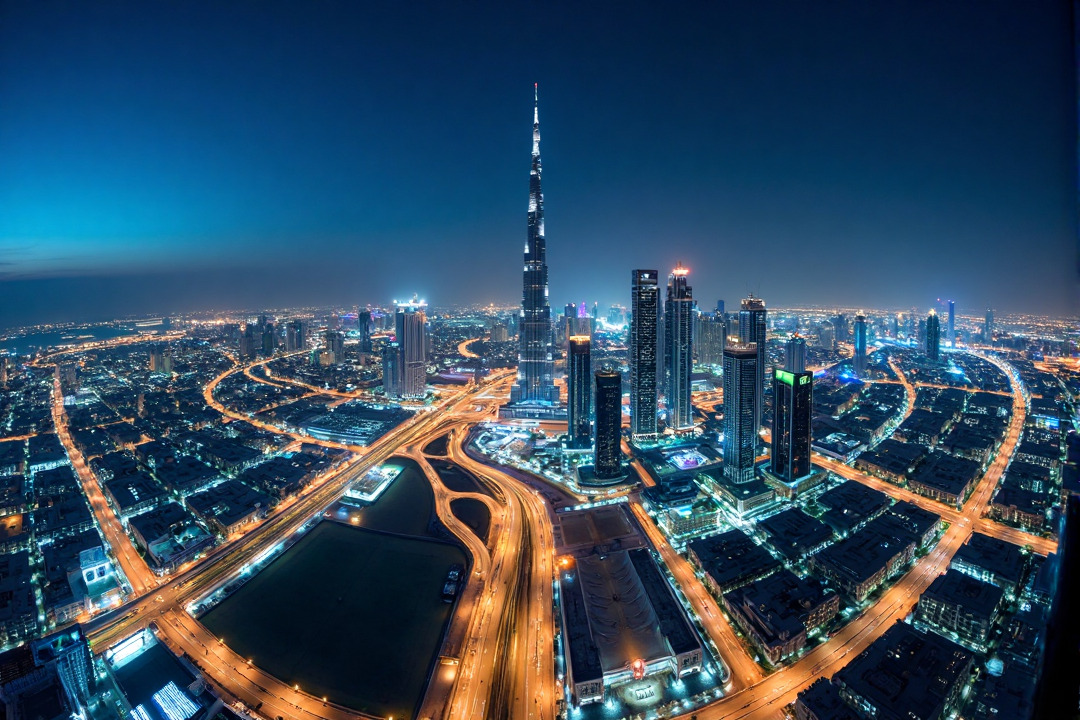<> Viral of Today <>
Home
»
QATAR TRAVEL NEWS
»
UAE, Saudi Arabia, And Qatar Lead The Middle East Tourism Surge With Unmatched Growth In Luxury, Heritage, And Nature-Driven Travel Experiences Across Dubai, Riyadh, And Doha
Sunday, June 8, 2025
UAE, Saudi Arabia, and Qatar lead the Middle East tourism revolution, fueling unprecedented growth in nature-orientated, luxury, and heritage travel experiences. With tourism expenditure increasing exponentially, these countries are transforming global travel with world-class amenities, unprecedented levels of luxury, and showpiece destinations such as Dubai, Riyadh, Doha, and Muscat. Shaping the course of global travel into the future, these countries provide global travelers with seamless connectivity, outstanding cultural immersion, as well as stunning natural splendor, establishing them as leading global travel hubs.
Travelers are increasingly opting for multi-country itineraries that offer a blend of both rich cultural heritage and contemporary advancements in the regions they visit. This emerging trend is gaining momentum, as travelers seek to explore not just one destination but entire regions, immersing themselves in the variety of experiences they offer. These itineraries are becoming particularly popular among those seeking to broaden their travel experiences while enjoying the best of both worlds – tradition and modernity.
The shift towards multi-country trips is highlighted in the newly released ATM Travel Trends Report for 2025, compiled by Tourism Economics for the Arabian Travel Market (ATM). The report provides an in-depth analysis of the travel sector in the Middle East, showcasing key developments and trends expected to shape the region’s tourism industry over the next decade.
Middle East Tourism Surge Expected to Hit \$350 Billion by 2030
The Middle East is poised for significant growth in the tourism sector. According to the ATM Travel Trends Report, tourism expenditure in the region is forecast to reach nearly \$350 billion by 2030, reflecting a remarkable 50% increase from current levels in 2024. This surge in spending is not only indicative of the region’s growing appeal as a travel destination but also demonstrates the continuing evolution of its tourism infrastructure and offerings.
Travel expenditure in the region is projected to exceed pre-pandemic figures by 54% in 2025, with a forecasted annual growth rate of over 7% from 2025 to 2030. These figures highlight the resilience and growth potential of the Middle East’s tourism sector, which is becoming an increasingly vital player in the global travel market.
The UAE: A Standout Destination in the Middle East
The United Arab Emirates (UAE) remains one of the most prominent destinations in the region, with its two major cities—Dubai and Abu Dhabi—leading the way in luxury, entertainment, and family-friendly experiences. Dubai, in particular, continues to dominate the global tourism market with its iconic skyscrapers, opulent hotels, luxury shopping, and world-class attractions. The city is also renowned for its thriving business environment, making it a top choice for both leisure and corporate travelers.
Abu Dhabi, the UAE’s capital, complements Dubai’s modern appeal with its cultural and heritage offerings, such as the Louvre Abu Dhabi and the Sheikh Zayed Grand Mosque. Both cities are poised to benefit from the increasing demand for multi-country itineraries, as travelers seeking a combination of luxury, innovation, and tradition look to experience both cities on the same trip.
On the other hand, Ras Al Khaimah and Fujairah are gaining traction as nature-driven destinations, attracting travelers in search of wellness and scenic retreats. These emirates offer a more serene, nature-oriented experience, with their rugged mountains, pristine beaches, and luxury resorts. This growing interest in nature-based tourism is reflective of a wider global trend where travelers are increasingly seeking out destinations that offer both relaxation and adventure in natural settings.
Saudi Arabia: A Hub for Premium and Business Travelers
In Saudi Arabia, cities like Riyadh, Jeddah, and AlUla are rapidly becoming hubs for premium and business travelers. The Kingdom is strategically blending modern hospitality and infrastructure with its rich cultural and historical heritage, making it a compelling destination for those seeking high-end experiences. Riyadh and Jeddah are attracting luxury travelers with their state-of-the-art hotels, shopping malls, and entertainment venues, while AlUla, with its stunning archaeological sites, is gaining recognition as a cultural gem.
Saudi Arabia’s focus on expanding tourism infrastructure as part of its Vision 2030 initiative is contributing to its growing appeal, with the country positioning itself as a must-visit destination for travelers seeking a mix of modernity and history. The growth of the luxury and business tourism sectors is poised to further solidify Saudi Arabia’s place on the global tourism map, especially as multi-country itineraries become more popular.
Oman and Qatar: Scenic Beauty and Luxury Experiences
Oman’s Muscat and Salalah are also seeing strong demand, thanks to their natural beauty, luxurious infrastructure, and cultural offerings. Muscat, with its pristine beaches and historic forts, offers a perfect blend of tradition and tranquility, making it an attractive destination for travelers seeking an authentic Middle Eastern experience. Salalah, located in the southern part of the country, offers a unique landscape with lush greenery and a cooler climate, further solidifying its position as a prime destination for nature and wellness tourism.
Similarly, Qatar’s Doha has emerged as a strong contender in the luxury tourism sector, with its world-class shopping malls, hotels, and cultural institutions. As the host city of the 2022 FIFA World Cup, Doha has made significant strides in enhancing its tourism infrastructure, and its scenic beauty combined with luxury amenities is drawing increasing numbers of tourists. Qatar’s focus on sustainability and cultural heritage is also helping to position it as a leading destination for travelers looking for a blend of modernity and tradition.
Expanding Air Connectivity in the Region
The growth of air connectivity in the Middle East is poised to be crucial in meeting the increasing demand for travel. The region’s four largest airlines—Emirates, Etihad Airways, Qatar Airways, and Saudia—have collectively ordered nearly 780 new aircraft from Boeing and Airbus, signaling their commitment to becoming global aviation hubs. The significant investments in fleet expansion will help ensure that the region’s airlines can support the growing demand for international travel and connect passengers to an even broader network of destinations.
With 85% of the region’s tourism growth driven by international visitors, the demand for high-end ground transport is also increasing. The chauffeur-driven transport sector is anticipating a 25-30% rise in airport transfer bookings, especially during the holiday and festive seasons. This growth reflects the increasing desire for seamless, luxurious travel experiences that complement the Middle East’s expanding tourism offerings.
Conclusion
UAE, Saudi Arabia, and Qatar have been spearheading the Middle East tourism boom with unprecedented luxury, cultural depth, and global-standard experiences in places such as Dubai, Riyadh, and Doha. Their strategic investments have transformed global travel, positioning them as world-class destinations for high-end travelers across the globe.
The Middle East is poised for continued growth in the tourism sector, with multi-country itineraries becoming increasingly popular among travelers seeking both traditional cultural experiences and modern developments. The UAE, Saudi Arabia, Oman, and Qatar are all capitalizing on this trend by offering a blend of luxury, heritage, and natural beauty, ensuring that they remain attractive destinations for a wide range of tourists. With expanding air connectivity, significant investments in infrastructure, and an increasing focus on luxury and cultural experiences, the Middle East is set to continue its rise as a global tourism powerhouse in the coming years.
Tags: Doha, Dubai, global travel, luxury travel, Middle East Tourism, Premium Travel, QATAR, Riyadh, saudi arabia, tourism growth, Travel News, UAE
This information will surprise you!
See also
- Read until the end to discover everything.
- Important information you need to know.
- Interesting facts and helpful tips.
Conclusion
Did you enjoy the news? Keep following us daily!

